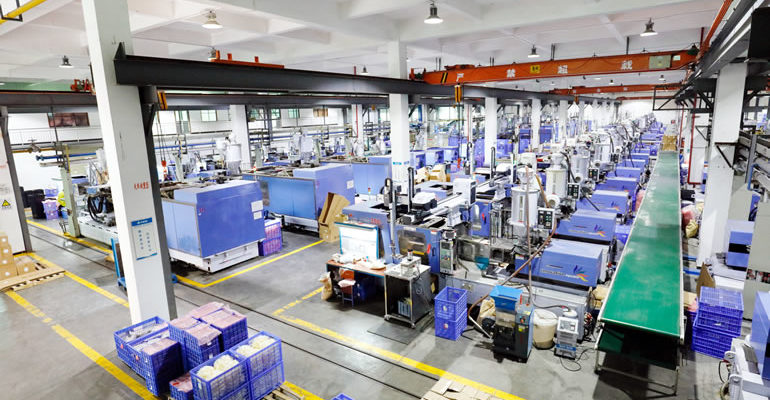The manufacturing world is undergoing a revolutionary shift driven by the power of automation. From manual lathes to robotic precision, the machining landscape has evolved dramatically, promising unprecedented levels of accuracy, efficiency, and productivity.
The Evolution of Automated Machining
A Glimpse into the Past: Traditional Machining Methods
Traditional machining, a cornerstone of the manufacturing industry, relied on manual labor and rudimentary tools. Skilled artisans would work tirelessly, ensuring each piece met the required specifications. However, these methods were time-consuming, error-prone, and limited in scalability.
The Introduction of CNC Machines and Their Advantages
With the advent of Computer Numerical Control (CNC) machines in the late 20th century, the face of machining changed forever. These machines, controlled by pre-programmed software, offered:
- Precision
- Consistency across multiple units
- Increased production speeds
- Reduced human error
CNC machines bridged the gap between manual labor and full-scale automation, setting the stage for the robotics-driven future.
The Transition to Full Automation: Robotics and Precision Tools
Building on the foundations laid by CNC, the industry started integrating robotics, AI, and advanced tools into the machining process. These developments promised:
- 24/7 production capabilities
- Minimal manual intervention
- Adaptability to complex tasks
For instance, a recent case study showcased a factory that transitioned to a fully automated setup, resulting in a 40% increase in productivity and a 25% reduction in production costs.
The Pioneers: Leading the Automation Wave
A Look at the Innovators and Early Adopters of Automated Machining
The early birds in any technological revolution often set the standards for the rest to follow. Companies like FANUC, Haas Automation, and our very own enterprise have been at the forefront of automated machining. Investing in state-of-the-art machinery, these pioneers have reaped significant competitive advantages, including faster time-to-market, reduced overhead costs, and enhanced product quality.
Case Study: Our Journey Towards Embracing the Future
We have always prioritized innovation. With a keen eye on the future, our inventory is consistently updated to include cutting-edge precision machining tools, robotics, and automated systems. We integrated our first robotic arm into the assembly line a decade ago. Today, 80% of our processes are automated, ensuring quality, efficiency, and safety at every production stage.
Depending on the project’s intricacies, our automation specialists identified areas where robotic integration could add value. The results were phenomenal: a 50% increase in production speed and a 30% reduction in defects.
Embracing automation in machining isn’t just about staying updated; it’s about envisioning and crafting the future. The journey from traditional methods to a tech-driven approach has transformed the industry. With pioneers leading the way and showcasing the immense benefits, it’s clear that the future of machining is automated, efficient, and promising.
Features and Benefits of Automated Machining
Precision and Consistency
In the world of manufacturing, precision is paramount. Automated machining, through its sophisticated technology, ensures unparalleled accuracy. Here’s how:
- Advanced tools that can operate at microscopic levels, achieving precision that’s often beyond human capability.
- Reduction of human error, ensuring consistent quality across vast production runs.
- Feedback loops that allow for real-time adjustments, further enhancing accuracy.
Efficiency and Productivity
Time, as they say, is money. And in the manufacturing sector, this couldn’t be truer. Automated machining brings forth:
- Rapid production rates, often working around the clock without breaks or downtimes.
- Optimized workflows thanks to intelligent systems that can pre-emptively address issues, reducing machine idle time.
- The capability to multitask, with multiple processes happening concurrently, further speeding up production.
Safety and Reliability
Human safety is paramount, and one significant advantage of automated machining is the drastic reduction in workplace accidents. Benefits include:
- Robots taking over tasks in hazardous environments or those that pose ergonomic risks to humans.
- Consistent performance ensures that the machinery operates reliably, reducing unexpected downtimes or malfunctions.
- Advanced sensors that can detect anomalies in the system, shutting down automatically in case of potential risks.
Scalability and Flexibility
Market demands are ever-changing. Automated machining offers the agility to adapt. How?
- Quickly reprogramming machinery to cater to different tasks, offering flexibility in production.
- Scaling up or down based on production needs, ensuring optimal resource usage.
- Integrating with other systems in the production chain for a seamless manufacturing process.
Robotic Integration: Is It Suitable for Your Venture?
Assessing the Project Needs
Not all projects require or can benefit from robotic integration. It’s essential to evaluate:
- The intricacies of the task – some unique crafts might still need a human touch.
- The scale of the project, as smaller runs, might not justify the setup costs of automation.
- The potential ROI of integrating robotics into the process.
Benefits of Robotic Integration
For ventures that align with robotic capabilities, the advantages are numerous:
- Substantial increase in efficiency, sometimes achieving production rates previously deemed unattainable.
- Quality assurance, with robots consistently producing at a defined standard.
- Cost savings in the long run, with reduced wastage, lower labor costs, and increased output.
Our Approach: Tailoring Solutions for Each Client
Every venture is unique, and a one-size-fits-all approach seldom works. Our dedicated automation specialists dive deep to understand specific needs, crafting tailored solutions. Whether it’s selecting the right kind of robotic arm, integrating AI for smarter operations, or setting up specialized sensors, we ensure our clients get the best of automated machining.
The journey towards full-scale automation in machining is a testament to human ingenuity. It’s not just about faster, more efficient production; it’s about setting new standards in quality, safety, and adaptability. The future beckons industries to embrace these advancements, ensuring they remain competitive, relevant, and always a step ahead in innovation. As we forge ahead into this exciting future, we stand committed to leading the way, ensuring our partners and clients harness the full potential of automated machining.

